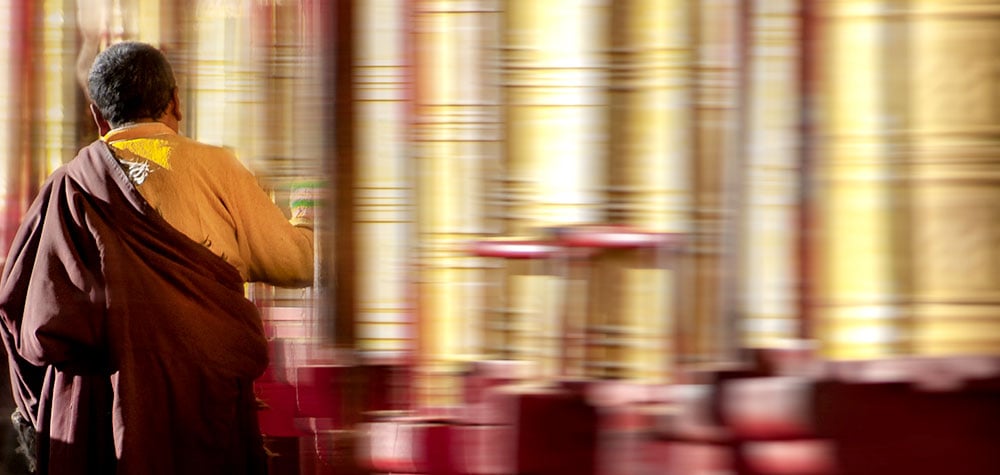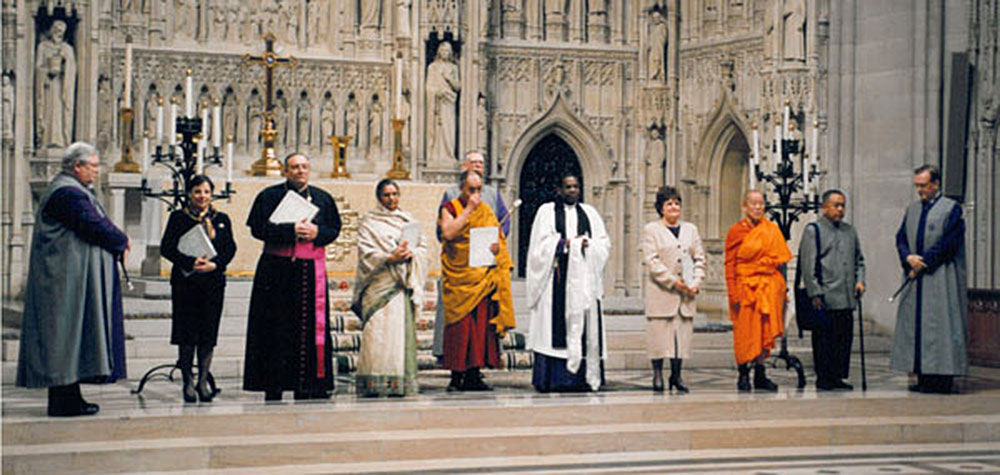TIBETAN BUDDHISM
Saving Tibet means saving its unique religion.
As the Dalai Lama said during ICT’s 30th anniversary, “Tibetan Buddhist culture, this ancient knowledge, I feel this is something really worthwhile to preserve, and there is real potential to share [it] with more human beings.”

Tibetan Buddhism developed inside Tibet starting in at least the 7th century AD. Its teachings of compassion, interdependence and nonviolence are even more relevant in today’s increasingly chaotic world.

The spiritual leader of Tibetan Buddhism is His Holiness the Dalai Lama, one of the most revered figures on the planet. During his long life in exile, His Holiness has been able to share Tibetan Buddhist culture with the world, highlighting its potential to contribute to the development of world civilization.

Buddhism is at the heart of Tibet’s ancient culture of wisdom. But according to the Central Tibetan Administration, after China took over Tibet in 1959, about 6,000 monasteries, nunneries and temples and their contents were partially or fully destroyed. China’s assault on Tibetan Buddhism continues to this day.

China has abducted Tibetan Buddhist leaders, forced monks and nuns out of their religious institutions and even claimed the right to select Tibetan Buddhist masters, including the Dalai Lama’s eventual reincarnation.
Tibetan Buddhism has enriched the lives of untold numbers of people inside and outside Tibet. But unless we act now, the religion’s future in Tibet is at risk.
![]()
Saving Tibet means saving its unique religion.
As the Dalai Lama said during ICT’s 30th anniversary, “Tibetan Buddhist culture, this ancient knowledge, I feel this is something really worthwhile to preserve, and there is real potential to share [it] with more human beings.”
Tibetan Buddhism developed inside Tibet starting in at least the 7th century AD. Its teachings of compassion, interdependence and nonviolence are even more relevant in today’s increasingly chaotic world.
The spiritual leader of Tibetan Buddhism is His Holiness the Dalai Lama, one of the most revered figures on the planet. During his long life in exile, His Holiness has been able to share Tibetan Buddhist culture with the world, highlighting its potential to contribute to the development of world civilization.
Buddhism is at the heart of Tibet’s ancient culture of wisdom. But according to the Central Tibetan Administration, after China took over Tibet in 1959, about 6,000 monasteries, nunneries and temples and their contents were partially or fully destroyed. China’s assault on Tibetan Buddhism continues to this day.
China has abducted Tibetan Buddhist leaders, forced monks and nuns out of their religious institutions and even claimed the right to select Tibetan Buddhist masters, including the Dalai Lama’s eventual reincarnation.
Tibetan Buddhism has enriched the lives of untold numbers of people inside and outside Tibet. But unless we act now, the religion’s future in Tibet is at risk.
![]()











